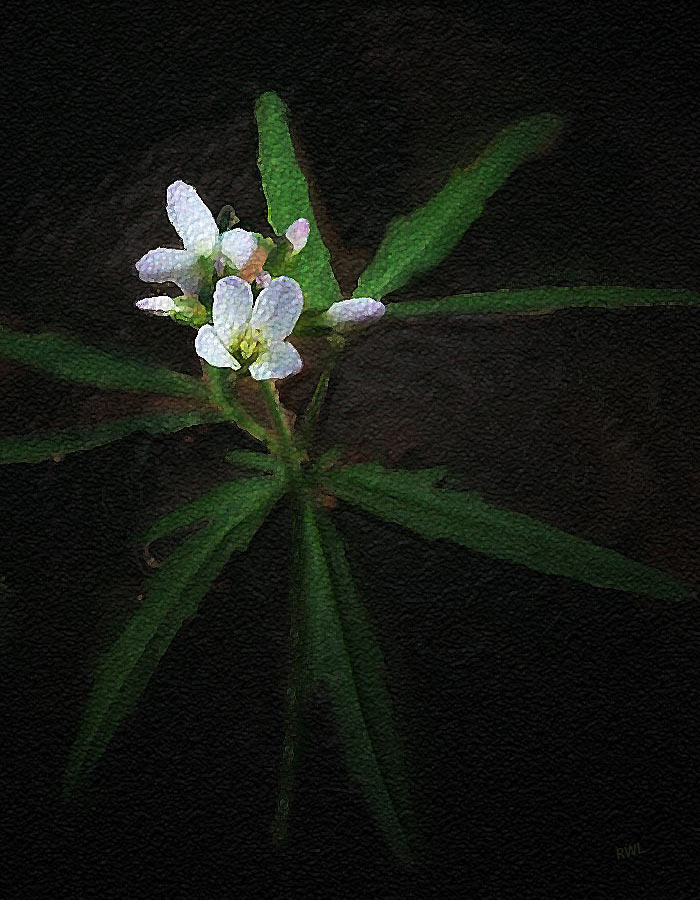Etymology
A Greek name (Kardamon) used by Dioscorides for some cress.See also: 1, 2, 3.
Distribution of Cardamine
- Abbreviations:
- USDA—United States Department of Agricultue,
- BONAP—The Biota of North America Program,
- VPI—The Vascular Plants of Iowa.
- FNA—Flora of North America
USDA Plant site: U.S. 40 species; Iowa 6 species.
BONAP site: U.S. 44 species; Iowa 7 species.
VPI site: Iowa 4 species.
Cardamine charactistics
FNA site: A few selected features from FNA: sepals (caducous), petals (rarely absent), white, pink, purple, or lilac,obovate, spatulate, or oblanceolate, claw absent or strongly differentiated from blade, stamens (6, rarely 4), equal in length?; nectar glands confluent, lateral glands annular or semi-annular, subtending bases of stamens. Fruits siliques, sessile,usually linear, rarely narrowly oblong or narrowly lanceolate, smooth or torulose, latiseptate; valves (papery, elasticallydehiscent, becoming spirally or circinately coiled) each not veined; septum complete, (membranous); ovules 4-80 per ovary; style usually distinct, rarely obsolete; stigma capitate.
The Cardamine species you are most likely to encounter in Iowa are:
Cardamine bulbosa (bulbous bittercress, spring cress)
Cardamine concatenata (cutleaf toothwort)
[syn. Dentaria laciniata]
Cardamine douglassii (purple cress)
Cardamine parviflora (small-flowered bitter cress)
Cardamine pensylvanica (Pennsylvania bittercress)
